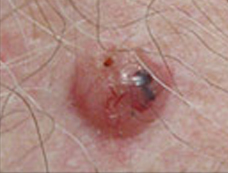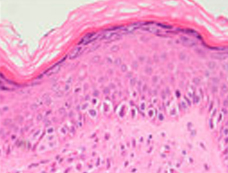

Non-melanoma skin cancers ( basal cell carcinomas and squamous cell carcinomas) are more common than melanomas, and have a lower mortality rate. However, the best chance of survival from any skin cancer, is to diagnose your skin cancer early. If you are worried you have a skin cancer, see your GP or call Dr Banky’s rooms for a consultation on 03 9519 9500.

Solar Keratoses, (often called sun spots) are red, scaling areas of skin on parts of the body which are frequently exposed to sunlight.
Read more
Basal cell carcinoma is the most common skin cancer in Australia. It typically occurs in people over 40, but can develop in younger adults.
Read more
Squamous Cell Carcinoma (SCC) is a skin cancer. They occur most often on the head, neck, hands, forearms (sun-exposed sites) and less often in other areas.
Read more
Bowen’s disease, also called squamous cell carcinoma in situ, is essentially a form of skin cancer. The malignant cells are confined to the epidermis, the outer layer of the skin.
Read more
A dysplastic or atypical naevus is a 'funny' mole whose appearance is different from that of common moles.They are benign (non-cancerous) lesions, however in some cases they may need to be excised in order to exclude a melanoma.
Read more
Australia has the world’s highest incidence rate for melanoma. Melanoma represents 10% of all cancers in Australia with more than 10,000 cases diagnosed annually. Usually asymptomatic, it presents as a changing or new pigmented lesion, often on sun-exposed sites.
Read more
Lentigo Maligna is a ‘melanoma in situ’ most typically on sun exposed areas of the head and neck. Lentigo maligna expands as a flat patch for many years, sometime decades.
Read more
 03 9519 9500
03 9519 9500